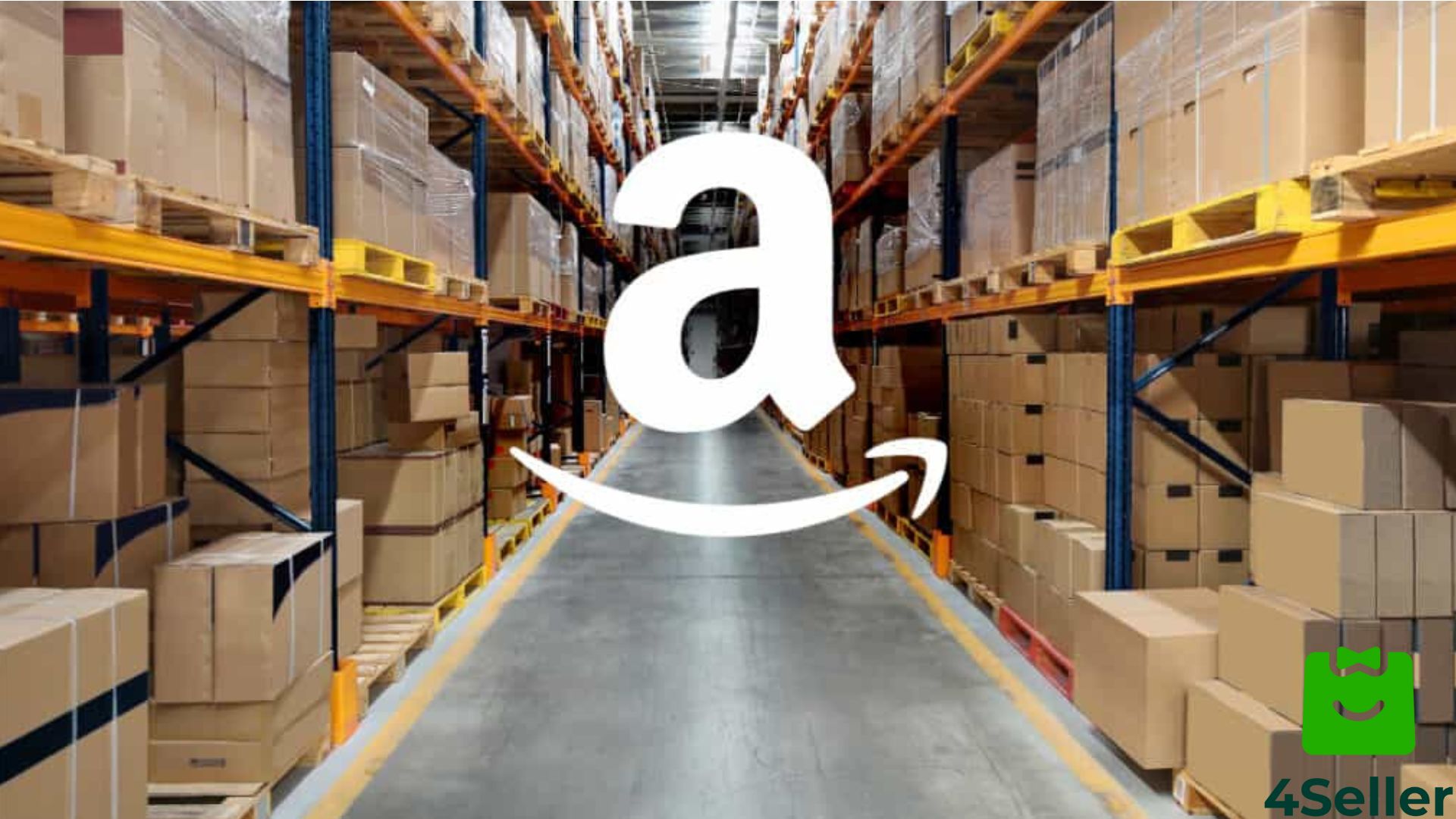Popular Posts
- Order Management
- TikTok Shop
- Temu
- About 4Seller
- Amazon
- Shopify
- Inventory Management
- Amazon MCF&FBA
- UPS
- Amazon Shipping
- FedEx
- DHL Express
- Creator Bulk Invite
- Listing Management
- eBay
- GLS
- Seller Tips
- Royal Mail
- Walmart
- Shein
- Multi-channel Store
- Amazon MCF
- Shipping Integration
- Yodel
- UniUni
- Poste Italiane
- OTTO
- USPS
- BRT
- Chronopost
- CIRRO
- Correos
- Correos Express
- Deutsche Post
- DHL Parcel
- CaiNiao
- Etsy
- Evri
- GOFO
- Kaufland
- AliExpress
- Cdiscount
- Beginner Tutorial
- Walmart WFS
- WooCommerce
- DHL
- DPD
- Platform Integration
- OMS
- Marketplace News
- Logistics Rule
- Inventory Sync
Stockout in Amazon--Impacts? Cause? Strategies?
 By Vikta04 Nov,2024
By Vikta04 Nov,2024
In the fast-paced world of E-commerce, maintaining optimal control over inventory is a critical factor that can make or break a business's success.
When your products are swiftly purchased on the Amazon marketplace, it indicates that your Stores is performing well. This signifies that all or certain specific products you provide are highly demanded. Additionally, it underscores the importance of maintaining an adequate stock level for your popular Amazon products. Experiencing a lack of inventory (or stockouts) can adversely impact your Amazon product listing, future sales potential, and brand image.
Therefore, Amazon order entry and management are crucial in helping vendors manage their inventory and sustain their sales momentum. Many individuals, particularly new sellers, perceive Amazon inventory management solely as listing product quantities on Amazon Seller Central. However, it encompasses much more than that.
So boost sales and achieve a top ranking on Amazon's product search engine, maintaining cash flow, sales forecasting, and order volume is essential. But the platform poses challenges for sellers in maintaining optimal stock levels due to its payment schedule of just twice a month. Also In business operations, the losses caused by out-of-stock situations are often overlooked, but in fact they have far-reaching impacts. It is not easy to accurately calculate the loss of out-of-stock, because it involves many complex factors, such as profit, cost, transportation cost, order and delivery cycle, inventory management and capital occupation. These factors are intertwined, making the loss assessment difficult.Estimating out-of-stock Risks
- The most direct and effective method is to comprehensively calculate all relevant costs, but the results are often jaw-dropping, and the losses are beyond imagination. At the same time, stocking up is not easy, and it may become an insurmountable obstacle. Product listings must remain salable. Once out of stock, the product's search ranking may be at risk of decline.
- For FBA (Fulfillment by Amazon) products, the consequences of out-of-stock are even more serious. The FBA stocking process includes sorting, labeling, packaging and transportation. Especially during holidays, the time required for these links may increase exponentially.
- Even for hot selling products, the impact of out-of-stock cannot be underestimated. Competitors will continue to increase sales during the time you are out of stock. Two weeks of out-of-stock is enough to cause your product ranking to drop significantly! More importantly, long-term out-of-stock will lead to a large number of customer losses

The Causes of Amazon Store Stockouts?
- Product demand is higher than expected, and inventory and safety stock levels are too low to fill all orders.
- Supply chain delays, working capital shortages or poor cash flow management.
-
Inaccurate forecasting and reporting
What's the Influence of Out of Stock?
-
Loss of customer trust and product competitive advantage;
Amazon rewards sellers with best-selling products and superior customer service. But a lack of stock products in the Amazon store could lead to a loss of Advantages. It can also lead to your product losing its place in the marketplace, no matter how much you optimize your listing. Customers will be disappointed when products they want to buy from you but out of stock.
-
Lack of Seller Reviews and Latest Products;
-
Lost Revenue
So what are some strategies to avoid stockouts?
- Accurately predict sales: Don’t underestimate the potential of sales. For example, if a product sells 3 units per day, it will reach 84 units per month, and it may double during holidays. Make sure to prepare stocks in advance based on these data.
- Increase inventory: Based on historical sales, the actual shipment quantity should exceed the forecast quantity, and it is recommended to increase by 20%. Although there are risks, this risk is more controllable than the consequences of inventory clearance.
- Stay vigilant: Sales teams and customer service need to monitor inventory status at all times to ensure timely replenishment and seize market opportunities.
- Use tools to track inventory: Use software to monitor the inventory status of each SKU and automatically generate purchase orders to ensure that stock is in place before the peak season. For example, 4Seller ERP can monitor inventory by setting inventory synchronization and inventory linkage to prevent overselling and out-of-stock.
But, What should you do when facing Stockout?
- Raise prices to deal with out-of-stock situations: Raising product prices can reduce order volume, thereby delaying the out-of-stock cycle. However, this may affect conversion rates and store weight.
- Self-delivery and follow-selling: If FBA is out of stock, you can consider following your own listing and reduce the rate of keyword ranking decline by self-delivery.
- FBA emergency replenishment: If conditions permit, timely replenishment of inventory is an effective way to alleviate the out-of-stock crisis.
Conclusion:
Out-of-stock situations not only bring direct economic losses, but also affect customer loyalty and product rankings. Through effective inventory management and countermeasures, sellers can reduce the risk of out-of-stock situations and improve market competitiveness and profitability. Therefore, having a tool such as 4Seller Would help you a lot. Turning on inventory sync in 4Seller can support real-time updates of actual warehouse inventory to various online stores, support the synchronization of inventory from self-owned warehouses, FBA warehouses and third-party warehouses to stores, and support stores to configure inventory linkage at the warehouse level to effectively avoid overselling.Topics
All Topics
- Order Management
- TikTok Shop
- Temu
- About 4Seller
- Amazon
- Shopify
- Inventory Management
- Amazon MCF&FBA
- UPS
- Amazon Shipping
- FedEx
- DHL Express
- Creator Bulk Invite
- Listing Management
- eBay
- GLS
- Seller Tips
- Royal Mail
- Walmart
- Shein
- Multi-channel Store
- Amazon MCF
- Shipping Integration
- Yodel
- UniUni
- Poste Italiane
- OTTO
- USPS
- BRT
- Chronopost
- CIRRO
- Correos
- Correos Express
- Deutsche Post
- DHL Parcel
- CaiNiao
- Etsy
- Evri
- GOFO
- Kaufland
- AliExpress
- Cdiscount
- Beginner Tutorial
- Walmart WFS
- WooCommerce
- DHL
- DPD
- Platform Integration
- OMS
- Marketplace News
- Logistics Rule
- Inventory Sync
Popular Posts
- 17 Dec,2024
Popular Posts
- 17 Dec,2024
Back to top




